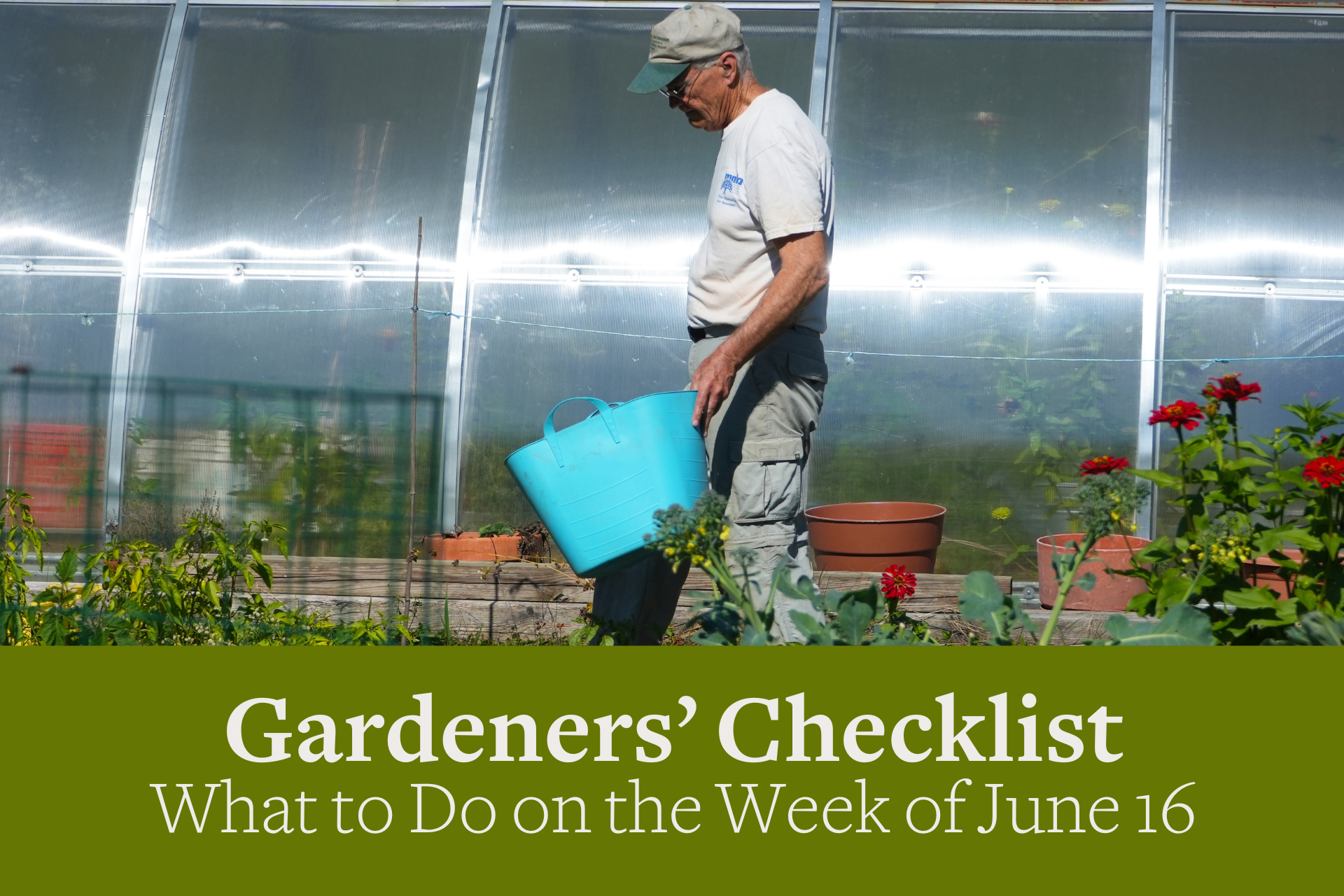You are here
Gardeners Checklist: Here Is What to Do on the Week of June 16
Gardeners Checklist: Here Is What to Do on the Week of June 16
By Ron Kujawski
* Cut flower stems of lavender before the flower buds are fully open if you’re to dry them. Most authorities recommend drying lavender flowers by hanging bunches of the floral stems in a dark, airy location. On the other hand, my wife spreads the flower stems in shallow wicker baskets and places them under the bed for drying. It works, and the fragrance induces floral dreams.
* Make it a routine practice to deadhead spent blossoms on annual flowers. Regular deadheading will encourage the plants to produce more flowers.
* Apply fertilizer to roses. Use one with an analysis similar to 5-10-10.
* Be sure to water vegetable crops frequently and side-dress them with a general-purpose garden fertilizer, preferably an organic slow-release fertilizer. June is the month when summer fruiting vegetables such as tomatoes, peppers, cucumbers, squash, and melons grow most rapidly. This is also true for carrots, onions, shallots, leeks, garlic, and other root crops.
* Harvest peas every two or three days. Pick those peas at their peak of maturity and those that have passed their peak. The latter can be discarded, but it’s important to remove them to extend the flowering period of the pea plants and thus the harvest period.
* Pick off the over-ripe and mushy fruit when harvesting strawberries. Discard these. The point is to remove them from the plants since the the fruit size of the remaining berries is diminished if old berries remain on the plants.
*
With the arrival of summer this week, the focus of most gardeners tends to shift from planting to maintenance tasks such as weeding, watering, and pest control. The assumption is that hot and dry weather is not conducive to successfully transplanting trees, shrubs, or flowers. Generally, that’s a good assumption for the casual gardener but it’s a bad assumption for the careful and attentive gardener. Though I’d be very wary of digging and transplanting anything at this time, especially fully leafed trees and shrubs, I have no such qualms about transplanting plants that are container-grown. These can be transplanted successfully by following a few rules. First, prepare the soil of the planting area by incorporating organic matter. That doesn’t mean simply adding organic matter to the backfill soil; work in organic matter to the soil at three times wider than the planting hole. Next, deeply water the soil at the planting site a few hours before transplanting. After planting, place a layer of mulch over the soil around the plants. Transplanting on a cloudy day or in the evening will reduce stress on the plants. Herbaceous plants can be further protected by placing a peach basket or similar structure over the plants for several days.
Ron Kujawski began gardening at an early age on his family's onion farm in upstate New York. Although now retired, he spent most of his career teaching at the UMass Extension Service. He serves on Berkshire Botanical Garden’s Horticulture Advisory Committee. His book, Week-by-Week Vegetable Gardener’s Handbook, is available here.
Help Our Garden Grow!
Your donation helps us to educate and inspire visitors of all ages on the art and science of gardening and the preservation of our environment.
All donations are 100 percent tax deductible.


